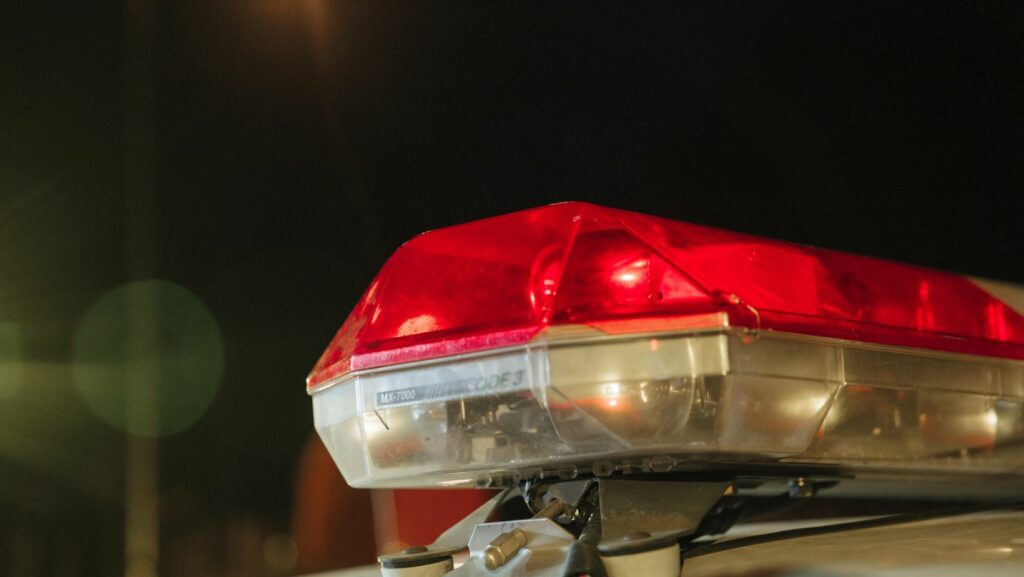Whether you’re at home or driving, hearing emergency sirens can be confusing and sometimes anxiety-inducing, especially when you’re not sure what type of vehicle is approaching or what action you should take. Beyond their immediate impact on our driving decisions, sirens also highlight the crucial need for safe and accessible streets for all kinds of travelers, especially as we work toward more sustainable transportation systems.
In this article, we’ll explore the different siren noises, how to respond appropriately, and why better street design that emphasizes sustainability can help make it easier for emergency responders to do their vital work.
What Do the Different Siren Noises Mean?
Whether you’re at home or driving, hearing sirens can be confusing, especially if you want to understand what the most sirens for police and emergency vehicles sound like and what they mean. Emergency vehicles — police cars, fire trucks, and ambulances — typically use two main siren patterns: a wail and a yelp. The wail is a long, slow up-and-down pattern that can be heard clearly over a long distance. Police often use this pattern when moving at regular speeds through city streets. The yelp is a faster, more urgent pattern that can cut through other noises. Police use it when approaching intersections or areas that require extra attention.
Fire trucks and ambulances, which are often larger and louder, usually employ a deeper, more powerful siren sound. Fire trucks may use the wail continuously as they navigate busy roads, switching to the yelp only at intersections or other spots where they need an immediate response from other drivers. Ambulances may also use a piercing or high-low tone, which can better penetrate the sound insulation of modern vehicles. In Europe and some other regions, emergency vehicles often use a distinctive two-tone siren that varies up and down at a rapid pace — a sound that reflects different regulations and cultural traditions about emergency services.
Why Sirens Matter for Sustainable Streets
Beyond the practical issue of siren recognition, there’s a deeper connection between sirens, street design, and sustainability. Streets built to serve people — with wider sidewalks, protected bike lanes, bus-priority lanes, and safe crossings — can help reduce congestion and make it easier for emergency vehicles to navigate. When streets are not clogged with single-occupancy cars, responders can pass quickly and safely without resorting to loud sirens that must force their way through traffic.
Investing in sustainable streets improves safety for everyone and makes our communities more resilient. When most people choose transit, cycling, or walking, fewer cars are on the road to block the way. Even during emergencies, streets designed for diverse forms of mobility allow fire trucks and ambulances to travel faster and more smoothly, saving lives.
What Should Drivers and Other Road Users Do When They Hear Sirens?
No matter the siren pattern, the most important action is to yield. Drivers should pull to the right, signal their intent, and stop as close as practical to the curb. If you’re approaching an intersection and hear a siren, clear the intersection carefully, then pull over and wait until all emergency vehicles pass.

People on bicycles or scooters should also make space. Even pedestrians on crosswalks need to pause and look around. Giving way to emergency responders is one of the most effective ways we can help them do their jobs quickly and safely.
How Sustainable Street Design Reduces Emergency Response Times
Cities across the globe are proving that sustainable street design is not only better for everyday life — it also enhances emergency response. Features like dedicated transit lanes help emergency vehicles bypass clogged routes. Traffic-calming measures may reduce the number of serious accidents in the first place. And policies that encourage cycling and public transit decrease the number of cars, creating clearer paths for first responders.
Additionally, urban planners are increasingly aware of the acoustic environment of cities. Modern emergency sirens, including newer rumbler sirens that emit low-frequency vibrations, help cut through sound insulation and grab attention without creating excessive noise pollution. This can make urban living more bearable while still prioritizing safety. Cities also explore variable siren tones that adjust volume or pitch depending on the surroundings — a technology that can lessen noise disturbance at night while ensuring that sirens remain effective.
Supporting Policies for Sustainable Transportation
Creating streets that support emergency response is part of the broader push toward sustainable and equitable cities. This requires coordinated policies — investments in public transportation, cycling infrastructure, walkable neighborhood design, and traffic management. It also calls for community education campaigns to help all road users understand their responsibilities when sirens sound.
By supporting these policies and choosing more sustainable transportation options ourselves, we can contribute to creating urban environments where everyone, including emergency responders, can navigate safely and efficiently. Beyond the environmental and social benefits, less congestion can directly save lives by allowing sirens to reach people faster.
Conclusion
Emergency sirens serve as an audible reminder that our streets must function for everyone, not just for cars. Every time you make a choice to walk, bike, or take transit, you help build a city where sirens face fewer obstacles and can do their work faster and more effectively. Learning to recognize different siren patterns and knowing how to respond is a small part of this. The bigger part is supporting and embracing sustainable street design that improves safety, accessibility, and mobility for all.
Next time you hear sirens approaching, take action calmly and promptly — and remember that by working toward a future with fewer cars and more sustainable travel, we can help make sure sirens reach their destination in time to save lives.

